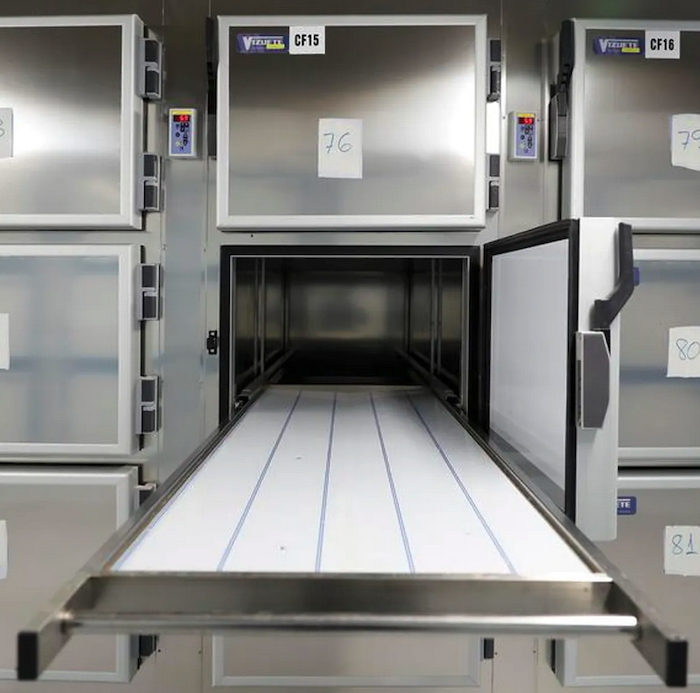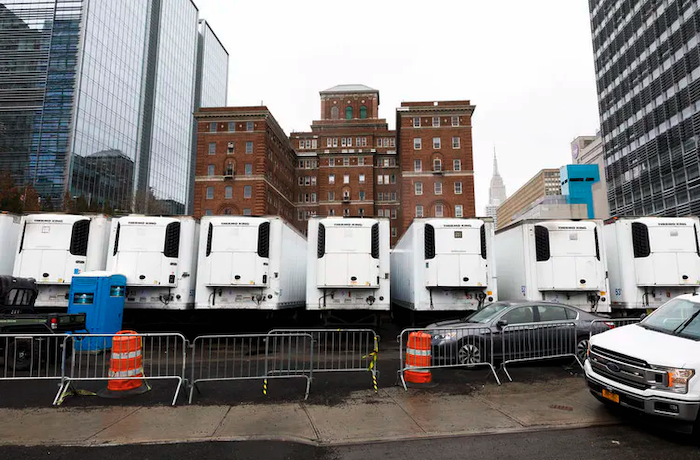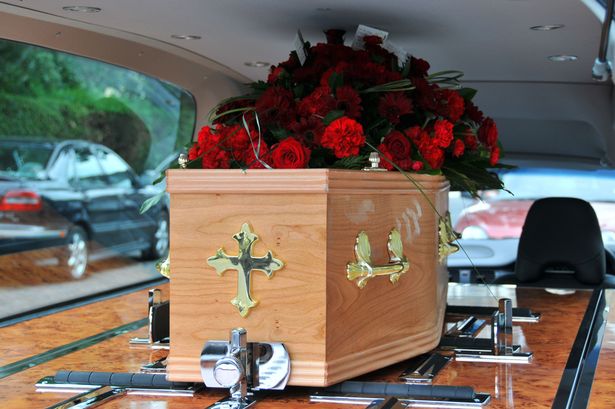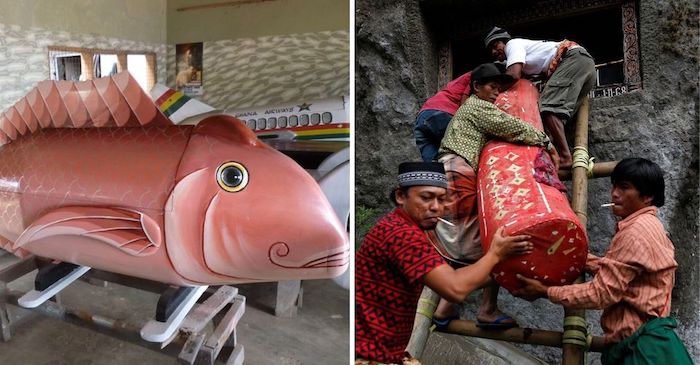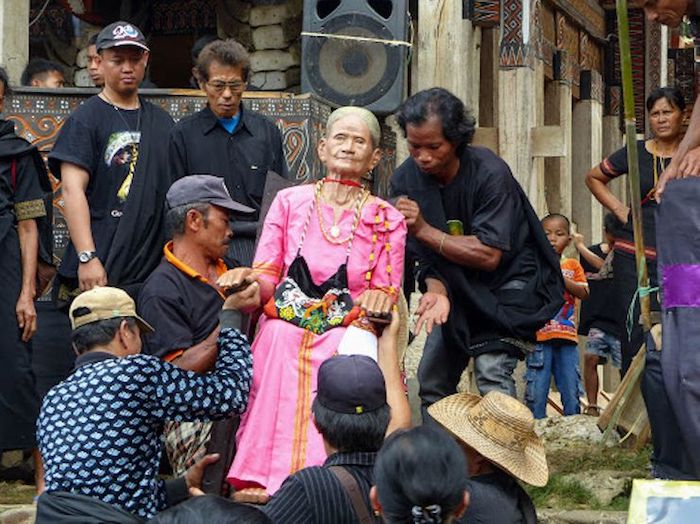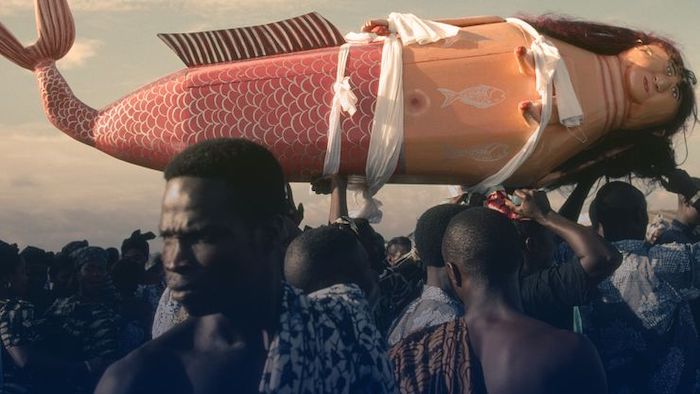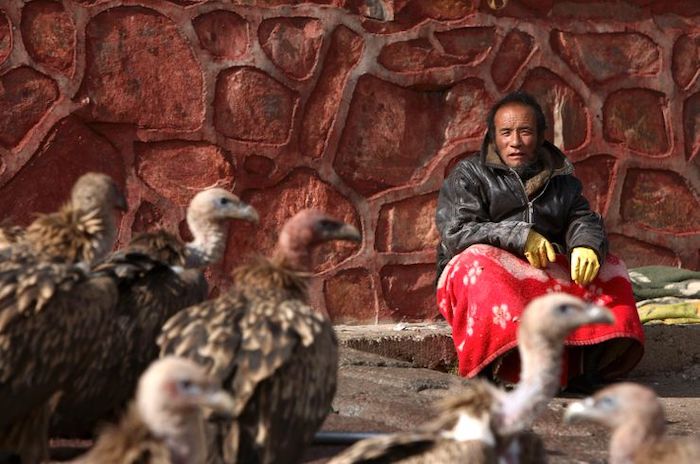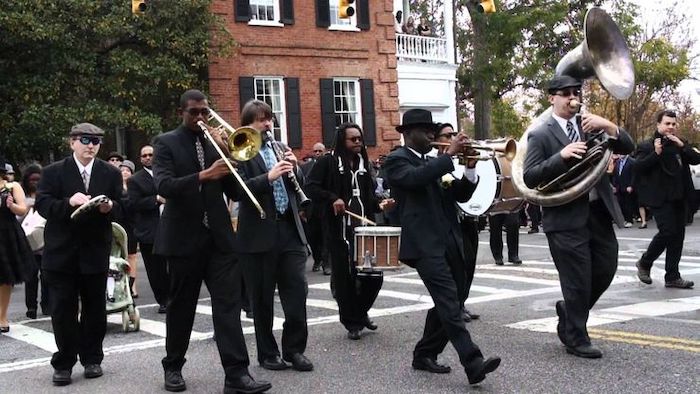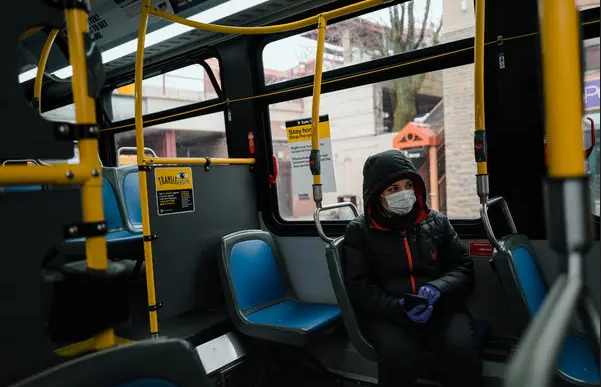What Happens to Their Bodies?
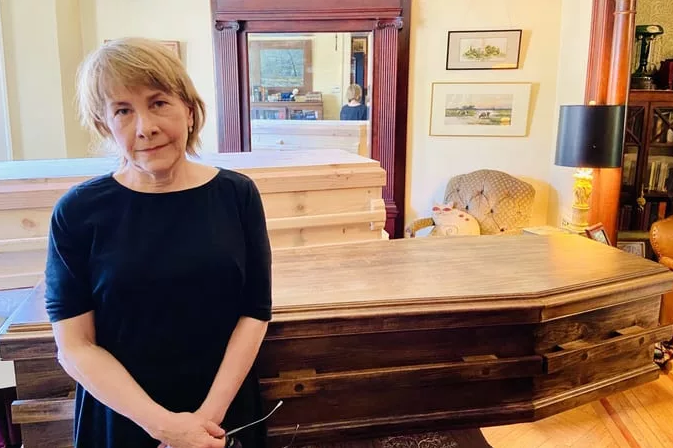
A conversation with Amy Cunningham, Brooklyn’s environmentally-friendly funeral director.
by Grace Gedye
On a Brooklyn neighborhood forum, funeral director Amy Cunningham put out the call. Could anyone contribute items, like flowers, to an upcoming funeral? An elderly woman had died of coronavirus in a nursing home and had no family in the area. Florists in New York are closed, so one resident contributed lilacs from her backyard, the Associated Press reported. Another embroidered “Mom” on some fabric that would be placed on the casket, with the deceased woman’s family watching via livestream.
More than 16,000 people have died of Covid-19 in New York City, the epicenter of the outbreak in the U.S. Just as hospitals have struggled to keep up with the influx of sick people, the city has also struggled to accommodate all of the dead. The state has relaxed environmental regulations to allow crematoriums to operate around the clock, and the city has dispatched a fleet of mobile morgues. Burials on Hart Island, New York’s mass grave for bodies that aren’t claimed, or whose family cannot afford a funeral, have increased five-fold.
Funeral directors like Cunningham have been forced to adapt ceremonies and services around the contagious disease. Cunningham, the founder of Fitting Tribute Funeral Services, specializes in environmentally friendly burials. She and I talked about how funerals have changed in New York.
This conversation has been shortened and edited for clarity.
How is your work different since the coronavirus outbreak started in New York?
Well, my firm specialized in earth friendly burials, home funerals, and witnessed cremation services, and none of those services are currently possible in exactly the same way I was delivering them. Because of the novel coronavirus, families are saying goodbye—on a good day—with nursing assistants holding the cell phone to the ear of the dying person in a hospital that the family hasn’t even been able to enter.
I’ve got four caskets in my living room right now. That’s a little unusual.
The funerals I’m managing now involve the transporting of the deceased person in a white plastic body pouch to protect the funeral home personnel from any risk of the virus passing to them in the hours after death. That bag isn’t coming off at the funeral home. While it’s believed that the coronavirus expires within the body at the time of a death, there is said to be some risk to individuals in the hours immediately afterwards, perhaps because the lungs of the dead person still hold a bit of air, and as we move them they actually can exhale a little bit after death. Plastic body bags are a fact of life for now, but they are upsetting to me. They’re hardly eco-friendly, not remotely green. I’ve got folks looking into how we could develop something just as sturdy and kinder to the planet.
Another thing that’s different is that previously, if a death occurred on a Tuesday I could arrange for a burial or cremation two days, three days later, sometimes even the next day if the paperwork went smoothly. Because of the sheer number of dead that we’re managing, cremations are now being scheduled at the end of May.
Are there any basic things you need in order to provide your services that are either hard to get ahold of or that you’re running out of?
It seems likely that there will be a casket shortage eventually. I’ve personally solved that issue by bringing caskets into my living room at home. I live in a two-story limestone row house and I’ve got four caskets in my living room right now. I went ahead and had the casket company deliver them, and had my son and husband carry them in so that at least I’d have some caskets that were clean and ready to move when I needed them. That’s a little unusual.
Have there been an influx of families that are in need of death care services but can’t afford them? If so, what are their options?
Yes, I’m hearing from people who need a funeral, and are disappointed that the wait time for an affordable cremation is so long. Some have lost their jobs, have no money, and need to plan a funeral with a burial now that might cost $1500 to $6000. It’s pretty devastating. There was a time when the deaths were occurring so quickly that some funeral homes weren’t able to manage the sheer volume of the work and were referring people out to other firms. Those firms were helping us New York City funeral directors cremate the dead by taking them to other states. There’s so many deceased people, our crematories are overwhelmed. So, there are people driving deceased folk up to Pennsylvania, New Jersey, other areas where the crematories are a little less overwhelmed.
In the coming month, that’s going to ease up. Today in New York as you’re interviewing me, I’m not hearing the same sirens out in the streets that I was two weeks ago. So it could be correct that, as Governor Cuomo says, we’re leveling this off. But people out of work are still struggling and starting GoFundMe pages to help them with the cost of the funeral.
I will say this, however: I’m really impressed with the local funeral directors that are reducing their prices for families in that situation. How can you charge them the full rate? It just can’t happen. So, we’re offering people our services at a reduction.
What does your typical day look like right now?
The heavy lifting and placing in the casket is done by amazing folks I employ to help me at the funeral home. My day is mostly on the telephone with grieving families, trying to schedule and arrange these burials and cremations in a timely way. I’m spending a fair amount of my time explaining to families why only 10 family members can come to the cemetery. We’re trying to educate folks about the possibilities and Zoom memorials and new ways to grieve remotely so that we can have some sort of commemoration of the life as we manage the very very basic down-to-earth matter of a simple disposition right now.
What has been your advice to people who have lost family or friends to coronavirus? Either practical advice, or different advice you’re giving on how to grieve?
I had already been thinking that we place too much emphasis on the hour-long funeral service. Saying farewell to someone is really the task of a lifetime, and something that you do most intensely over the period of the first full year. So I’ve been coaching families to see that, yes, we’ve lost the gathering we’re most familiar with, but you will be able to find a way to mourn, and find community, and relate to your other family members in a way that will be new but restorative in surprising ways.
When I do have a casket in my car headed for a burial, we’ve been replacing traditional chapel gatherings with doing these outdoor block parades. I drive the car with the casket in it onto the actual block where the deceased person lived, and people can acknowledge the death as a neighborhood. I had one death caused by a heart attack. We have to remember that other sorts of deaths still occur in the age of the novel coronavirus. I drove to the man’s block, opened the car, and allowed people to approach the car while maintaining a safe distance from each other. They placed flowers in the car, and then the immediate family drove to the cemetery and stood at the lovely graveside service 6 to 10 feet apart. Good funeral, lots of love expressed.
I know you specialize in sustainable, or greener burials. Are you still able to do those kind services?
Yes. My real contribution as a funeral director in this moment is personally driving people upstate to eco-friendly cemeteries that will just bury simple caskets in the earth. The only problem is that there is this plastic body bag inside there that I never used to have to use. Most of the eco-friendly cemeteries are saying, “well, God, what can we do, we know it’s a crisis in our country, and a time of considerable suffering.” So, they may take that plastic bag for the short term as we work it out. In other words, the green burials I’m managing are just a bit less green than they used to be but we’re doing the best we can.
Do you think the pandemic will lead to any lasting changes in the funeral industry?
I hesitate before mentioning this because it doesn’t feel like a great time to criticize the conventional funeral industry. The men who have been in the business 40 years and were nearing retirement have flung themselves into this crisis and been so courageous.
However, maybe when we catch our breath, we’ll evaluate where we’re headed as an industry and how we might provide better services to more people, and take the drive to profit from the funeral out altogether by looking at cooperative funeral home structure, which is operating very successfully in the state of Washington.
In the old days prior to the Civil War, before the American funeral industry was formed, communities took care of their own. And it feels to me like we could attend to that kind of care again and find ways to make deaths less of a medical event, and more of a community-based experience. So, as I work hard and admire the conventional guys I know and work around, I’m at the same time thinking, “Gee, there must be a better way to give funeral services to people at an affordable rate, and in a loving way.”
Complete Article ↪HERE↩!


